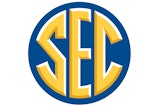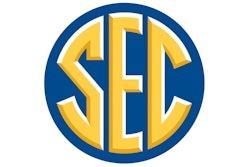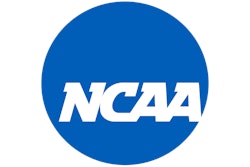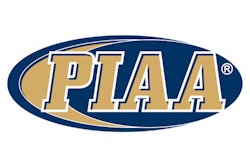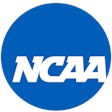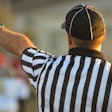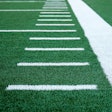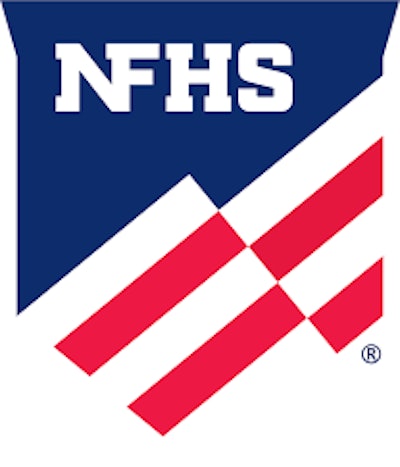
Softball
Beginning next year, pitchers in high school softball will be allowed to disengage both feet from the playing surface if the pivot foot is not replanted prior to the delivery of the pitch. Previously, the pivot foot was required to remain in contact with the ground.
This modification to Rule 6-1-2c of the NFHS Softball Rules Book headlined a set of seven rules changes recommended by the NFHS Softball Rules Committee at the committee’s June 11-13 meeting at the Conrad Hotel in downtown Indianapolis. All changes were subsequently approved by the NFHS Board of Directors.
“When examining the survey responses, the NFHS Softball Rules Committee recognized that a majority of the membership were in favor of this change,” said Sandy Searcy,NFHS director of sports and liaison to the NFHS Softball Rules Committee. “An additional topic the committee discussed was whether a pitcher gains an advantage by having their pivot foot airborne vs. having it remain in contact with the ground. Our rules have traditionally allowed for flexibility to accommodate the differing skill levels of high school athletes. This change allows for exploration of different styles of pitching during student-athletes’ developmental stages.”
In another change, Rule 1-8-6 now permits electronic information to be transmitted to the dugout from anywhere outside of live ball area. This reflects current technology and still requires that electronic devices are used in the dugout but no longer stipulates where the video is recorded or how it is transmitted.
Beginning January 1, 2027, softball uniforms may display only the player’s name, school name or nickname, school mascot and/or school logo as part of Rule 3-2-3. An additional uniform change for the 2024 season was approved in Rule 3-2-5, which more clearly defines what can be worn on the head to be consistent with other NFHS sports.
Changes to Rule 3-2-7 clarify where wristbands with a playbook/playcard attached can be worn. The equipment is only permitted to be worn on a player’s wrist or arm, and pitchers must wear it on their non-pitching arm, prohibiting wristbands from being worn on the belt.
The NFHS Softball Rules Committee further clarified the list of approved and non-approved substances to be used as drying agents for the pitcher in Rule 6-2-2. The rule specifies that dirt is not considered a foreign substance and does not have to be wiped from the hand prior to contacting the ball. Acceptable use of drying agents under the supervision and control of the umpire includes powdered rosin or any comparable drying agent listed on USA Softball’s certified equipment website.
A complete listing of the softball rules changes will be available on the NFHS website at www.nfhs.org. Click on “Activities & Sports” at the top of the home page and select “Softball.”
According to the most recent NFHS High School Athletics Participation Survey, fast-pitch softball is the fifth-most popular sport for girls with 362,038 participants in 15,877 high schools nationwide. The survey also indicated an additional 6,602 participants in slow-pitch softball.
Lacrosse
High school girls lacrosse games will now be played in 12-minute quarters instead of two halves, and a player awarded a free position after being fouled outside the critical scoring area no longer has to stop completely before continuing the course of play.
The National Federation of State High School Associations (NFHS) Girls Lacrosse Rules Committee included these two major changes in the 11 total rules proposals accepted at its annual rules meeting held June 19-21 in Indianapolis. All 11 recommended changes were approved by the NFHS Board of Directors.
“High school girls lacrosse continues to grow, and it is reflective in the skill and athleticism of the athletes competing,” said Lindsey Atkinson, NFHS director of sports and liaison to the NFHS Girls Lacrosse Committee. “The NFHS Girls Lacrosse Rules Committee continues to focus on allowing the rules to support the pace of play while minimizing risk to the student-athletes.”
Shifting from halves to quarters – a change reflected in Rule 4-1-1 – provides coaches more opportunities to give direct instruction during the game and aligns the duration of play with boys lacrosse. Teams will receive a two-minute break after the first and third quarters and a 10-minute halftime. Teams will also change ends on the field after each quarter.
In addition to improving the pace of the game, allowing a player to continue without stopping after being awarded a free position outside the critical scoring area reduces the defense’s opportunity to adjust while play is halted. Previously, this rule (Rule 5-4-1) stated that the player who was fouled had to achieve a “settled stance with both feet stationary and the ball positioned in the head of the crosse” before restarting.
Reducing the number of false start penalties was also a focus of the 2024 rules changes, as the definition of the infraction was altered within Rule 10-1j. As a result, false start penalties will only be assessed during a free position (after a foul committed within the critical scoring area) at an 8-meter hash mark, 12-meter fan or dot in the player’s offensive end of the field, allowing officials to reset play more quickly in many cases. This rule change also brought about the deletion of Rule 5-4-5 – the previous mandate that a false start penalty be called any time an offensive player self-starts when self-starts are not permitted.
Another change within Rule 10-1 requires a free position to be awarded at the closest dot for a three-second violation when the spot of the ball is outside the critical scoring area and below the goal line extended. It also clarifies the location of other three-second violations.
Three equipment-related rules changes were approved for the 2024 season. A new clause in Rule 2-6-1 requires goalkeepers to wear shorts or pants manufactured with integrated thigh padding. Color restrictions on tooth and mouth protectors were removed from Rule 2-7-1, which was also edited to align with the NFHS Sports Medicine Advisory Committee’s recommended guidelines. And lastly, compression shirts that meet National Operating Committee on Standards for Athletic Equipment (NOCSAE) requirements at the time of manufacture are now permissible as part of Rule 2-7-4 NOTE (Personal Equipment) and Rule 2-9-5 (Uniforms). Allowing field players to wear compression shirts, which do not need to adhere to the color requirements for undergarments, accommodates the preference to wear protective padding intended to prevent commotio cordis.
New Rule 2-9-4e in the Uniforms section states that “the school’s name, nickname, logo, mascot, and/or team member’s name are permitted above the number on the front and/or back of the jersey,” clarifying the allowable identifying references that can be placed on the jerseys aligning with other NFHS rules codes. A supplemental NOTE declares that jerseys with non-compliant identifying marks and names will be considered illegal beginning July 1, 2027.
New language was also added to Article 5 of Rule 2-4, the section of the NFHS Girls Lacrosse Rules Book that deals with crosse inspections. Although a “stick check” can still be requested at any time while the game clock is stopped, the request must now be completed before the official’s hand is in contact with both centers’ sticks to set up the ensuing draw.
Finally, slight changes were made to Rule 4-2-2 EXCEPTION and Rule 4-2-3 regarding official time-outs. Rule 4-2-2 EXCEPTION covers the protocols for official time-outs while the “10-goal rule” is in effect and now includes “offside foul,” “inadvertent whistle” and “alternate possession” as additional instances where the game clock will not stop. In Rule 4-2-3, the portion of the rule prohibiting coaching during an official time-out has been removed.
A complete listing of the girls lacrosse rules changes will be available on the NFHS website at www.nfhs.org. Click on “Activities & Sports” at the top of the home page and select “Lacrosse-Girls.”
According to the 2021-22 NFHS High School Athletics Participation Survey, 96,762 girls participate in lacrosse in 3,028 high schools across the country, making it the nation’s 10th-most popular girls’ sport.
Baseball
In an effort to more clearly define false starts in high school track and field events, two new starting violations have been adopted for the 2024 season.
In Rule 5-7-4c, the previous language which required participants to remain motionless after assuming the set position prior to the starting device being fired, has been replaced with the following:
“If a runner leaves their mark with a hand or foot after the ‘set’ command but before the starting device is fired.”
In addition, a new violation in (d) calls for a violation “if a runner leaves their mark with a forward motion without the starting device being fired.”
Further, a new NOTE in Rule 5-7-4 states that “extraneous motion before the device is fired does not necessarily require a false start to be charged unless the criteria in the rule are met. If the starter thinks the movement creates a situation of unfairness to any of the competitors, the starter may cancel the start with the command ‘stand up,’ or if the device has been fired, recall the race as an unsteady or unfair start and redo the starting procedure.” This NOTE was also added to Rule 8 regarding cross country.
“The rules committee felt that these changes offer a clearer definition of a false start and will help add consistency in how false starts are officiated,” said Julie Cochran, NFHS director of sports and liaison to the NFHS Track and Field Rules Committee.
This change to rules relating to false starts was one of 11 rules revisions recommended by the National Federation of State High School Associations (NFHS) Track and Field Rules Committee at its June 12-14 meeting in Indianapolis. The recommendations were subsequently approved by the NFHS Board of Directors.
A significant change was approved by the committee in Rule 6 regarding field events. In the discus, shot put and javelin, athletes will be permitted to apply tape to their fingers as long as the fingers are not taped together, and all fingers can move independently. The specific language approved by the committee is as follows:
“Tape may be used on the hand and fingers provided that no two fingers are taped together. The tape may be continuous and connect to the wrist, but all fingers must be able to move independently. A wrist wrap used in lieu of tape is acceptable and is not considered an artificial aid.”
In other changes to field events, further definition related to breaking ties was added to Rule 6-3-2b. To address the situation when two or more tied competitors withdraw from the competition/jump-off at the same time, the committee added the following language to determine first place:
Rule 6-3-2b(4)(b) states that “if all competitors eligible for a jump-off withdraw from the competition before the jump-off begins or at a height change, those competitors shall tie for first place, and any team points shall be added together and divided equally among the tying competitors.”
In addition, a NOTE was added to the rule stating that an athlete who withdraws from a jump-off concedes the higher place, but the withdrawal does not negate the athlete’s performance in that event up to the point of withdrawal. In addition, withdrawing from a jump-off is not unsporting conduct.
Another field event change was approved for Rule 6-2-2, stating that in the high jump and pole vault, one minute shall be allowed for the first trial of a competitor first entering the competition. The committee noted this additional language clarifies how the rule is to be interpreted and adds support to the official’s decisions when a competitor enters the vertical jumps after the event has started.
In other changes to Rule 5-Running Events, some of the specific language regarding track markings in Rule 5 was deleted and replaced with the following general statement: “Staggered markings are dependent on the geometry of each individual track.” In addition, a NOTE was added to the rule stating that a competent surveyor should determine the lane staggers. The same language was added to Section 9 regarding indoor track and field.
In other Rule 5 changes, a clarification was provided to the section on hurdling infractions. It is an infraction if a competitor knocks down or displaces any hurdle by hand. The addition of displacement of any hurdle was added to give guidance to officials when ruling on infractions.
In Rule 4 regarding “Competitors and Competition,” state associations will be permitted to allow participants in a high school track and field meet to compete in more than four events, effective with the 2024 season.
Rule 4-2-1 stating that a competitor shall not compete in more than four events, including relays, remains intact; however, a NOTE was added to the rule for flexibility for state associations as follows: “State associations may adopt different participation limitations, not to exceed six events.”
Cochran said the addition of this state association adoption adds flexibility for state associations. Ultimately each state will determine the number and type of events best suited for its state and student-athletes – not to exceed six total events.
Other rules revisions approved by the Track and Field Rules Committee include the following:
- Rules 8-1, 8-5: Clarifies the cross country course layout and reorganizes the rule.
- Rule 9-6-1: New rule offers guidance on the relay exchange zone for indoor track and field.
- Rule 3-8-1: With technology advancements, changed the requirement for two appointed officials when FAT timing is used to one appointed timing official.
A complete listing of the track and field rules changes will be available on the NFHS website at www.nfhs.org. Click on “Activities & Sports” at the top of the home page and select “Track & Field.”
According to the 2021-22 NFHS High School Athletics Participation Survey, track and field is the second-most popular sport for boys with 569,262 participants in 17,070 high schools nationwide, and it is No. 1 for girls with 456,697 participants in 17,028 schools.
Track and Field
In an effort to more clearly define false starts in high school track and field events, two new starting violations have been adopted for the 2024 season.
In Rule 5-7-4c, the previous language which required participants to remain motionless after assuming the set position prior to the starting device being fired, has been replaced with the following:
“If a runner leaves their mark with a hand or foot after the ‘set’ command but before the starting device is fired.”
In addition, a new violation in (d) calls for a violation “if a runner leaves their mark with a forward motion without the starting device being fired.”
Further, a new NOTE in Rule 5-7-4 states that “extraneous motion before the device is fired does not necessarily require a false start to be charged unless the criteria in the rule are met. If the starter thinks the movement creates a situation of unfairness to any of the competitors, the starter may cancel the start with the command ‘stand up,’ or if the device has been fired, recall the race as an unsteady or unfair start and redo the starting procedure.” This NOTE was also added to Rule 8 regarding cross country.
“The rules committee felt that these changes offer a clearer definition of a false start and will help add consistency in how false starts are officiated,” said Julie Cochran, NFHS director of sports and liaison to the NFHS Track and Field Rules Committee.
This change to rules relating to false starts was one of 11 rules revisions recommended by the National Federation of State High School Associations (NFHS) Track and Field Rules Committee at its June 12-14 meeting in Indianapolis. The recommendations were subsequently approved by the NFHS Board of Directors.
A significant change was approved by the committee in Rule 6 regarding field events. In the discus, shot put and javelin, athletes will be permitted to apply tape to their fingers as long as the fingers are not taped together, and all fingers can move independently. The specific language approved by the committee is as follows:
“Tape may be used on the hand and fingers provided that no two fingers are taped together. The tape may be continuous and connect to the wrist, but all fingers must be able to move independently. A wrist wrap used in lieu of tape is acceptable and is not considered an artificial aid.”
In other changes to field events, further definition related to breaking ties was added to Rule 6-3-2b. To address the situation when two or more tied competitors withdraw from the competition/jump-off at the same time, the committee added the following language to determine first place:
Rule 6-3-2b(4)(b) states that “if all competitors eligible for a jump-off withdraw from the competition before the jump-off begins or at a height change, those competitors shall tie for first place, and any team points shall be added together and divided equally among the tying competitors.”
In addition, a NOTE was added to the rule stating that an athlete who withdraws from a jump-off concedes the higher place, but the withdrawal does not negate the athlete’s performance in that event up to the point of withdrawal. In addition, withdrawing from a jump-off is not unsporting conduct.
Another field event change was approved for Rule 6-2-2, stating that in the high jump and pole vault, one minute shall be allowed for the first trial of a competitor first entering the competition. The committee noted this additional language clarifies how the rule is to be interpreted and adds support to the official’s decisions when a competitor enters the vertical jumps after the event has started.
In other changes to Rule 5-Running Events, some of the specific language regarding track markings in Rule 5 was deleted and replaced with the following general statement: “Staggered markings are dependent on the geometry of each individual track.” In addition, a NOTE was added to the rule stating that a competent surveyor should determine the lane staggers. The same language was added to Section 9 regarding indoor track and field.
In other Rule 5 changes, a clarification was provided to the section on hurdling infractions. It is an infraction if a competitor knocks down or displaces any hurdle by hand. The addition of displacement of any hurdle was added to give guidance to officials when ruling on infractions.
In Rule 4 regarding “Competitors and Competition,” state associations will be permitted to allow participants in a high school track and field meet to compete in more than four events, effective with the 2024 season.
Rule 4-2-1 stating that a competitor shall not compete in more than four events, including relays, remains intact; however, a NOTE was added to the rule for flexibility for state associations as follows: “State associations may adopt different participation limitations, not to exceed six events.”
Cochran said the addition of this state association adoption adds flexibility for state associations. Ultimately each state will determine the number and type of events best suited for its state and student-athletes – not to exceed six total events.
Other rules revisions approved by the Track and Field Rules Committee include the following:
- Rules 8-1, 8-5: Clarifies the cross country course layout and reorganizes the rule.
- Rule 9-6-1: New rule offers guidance on the relay exchange zone for indoor track and field.
- Rule 3-8-1: With technology advancements, changed the requirement for two appointed officials when FAT timing is used to one appointed timing official.
A complete listing of the track and field rules changes will be available on the NFHS website at www.nfhs.org. Click on “Activities & Sports” at the top of the home page and select “Track & Field.”
According to the 2021-22 NFHS High School Athletics Participation Survey, track and field is the second-most popular sport for boys with 569,262 participants in 17,070 high schools nationwide, and it is No. 1 for girls with 456,697 participants in 17,028 schools.













